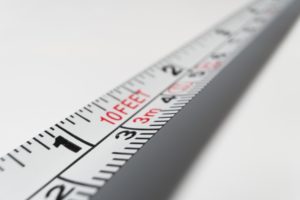Counting activities as sales metrics can seem like micromanagement.
Tracking conversations, meetings and proposals used to be invasive, let alone tedious. But as Jason Jordan and Michelle Vazzana argue in “Cracking The Sales Management Code,” those are leftover sentiments from a time before ubiquitous information technology.
 Modern sales teams are empowered with activity-based selling. They use tools like sales scorecards. And sales activity management systems automatically track activities and pacing-to-goal, improving decision-making for individual reps on where they spend their time.
Modern sales teams are empowered with activity-based selling. They use tools like sales scorecards. And sales activity management systems automatically track activities and pacing-to-goal, improving decision-making for individual reps on where they spend their time.
With this technology available, Jason and Michelle contend that tracking salespeople’s activities is a key ingredient to better sales leadership, because it leads to proactive management. Not only can sales leaders course-correct in real time, but they know where reps struggle and coach accordingly.
We can’t forget about the other end of the funnel: Outcome metrics like profit and market share are important measures of the organization’s overall health. That’s why strong sales metrics have both leading indicators (sales activities) and lagging indicators (outcome metrics). Here’s what else you need to know.
Lagging sales metrics are …
Business results such as revenue or profit. They show what happened in the past, and cannot be changed in real time. According to research from Vantage Point Performance, 83 percent of metrics used by sales leaders fall under this category.
These shouldn’t be your only type of sales metric. Lagging indicators are the output of the sales activities that precede them. You can’t directly affect these numbers. But it’s possible to influence them by managing the sales activity inputs.
Leading sales metrics are …
Measurements like number of quality conversations and proposals sent.
These sales metrics are controllable right now. If changed, they can affect future results. For example, if you wanted to increase your average deal size (an outcome), you could increase VP-level conversations or prospect ROI calculations (sales activities).
Leading sales metrics are inherently proactive. They allow you to steer performance in a positive direction, as well as develop a directional sales forecast that ties directly back to the controllable actions of your sales team.
Why You Need Both Leading And Lagging Sales Metrics
An industry best practice for sales metrics is to have both types. But why?
Because a good set of sales metrics measures both the inputs and outputs of your sales process. Sales metrics should examine every stage of selling cycle.
Top of the funnel:
- Leads Generated (leading indicator)
- Sales Accepted Opportunities (leading indicator)
Middle of the funnel:
- Demo Meetings (leading indicator)
- ROI Discussions (leading indicator)
- Proposals sent (leading indicator)
Bottom of the funnel:
- New Logo Revenue (lagging indicator)
- Recurring Revenue (lagging indicator)
CRM systems track lagging indicators. But don’t treat your organization like a black box. Sales leadership is more than knowing leads come in and deals come out. To optimize your sales process, you need information throughout the funnel. Track sales activities along with your outcome metrics to understand how and why you’re winning deals.



